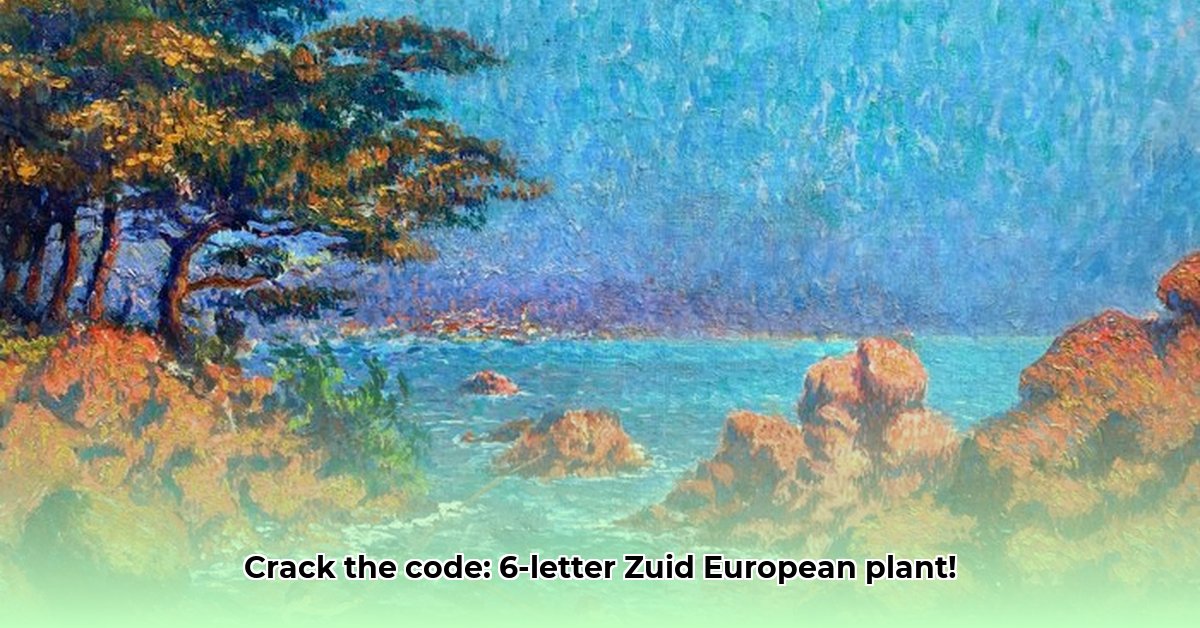
Ag shame, those crossword puzzles can be proper tricky, hey? You're cruising along, then bam, you hit a wall. This often happens with plant clues, especially when you throw in a geographical twist like "Zuid Europese Plant 6 Letters." This article unravels the puzzle, exploring the linguistic differences between English and Dutch crossword clues, and looking at some possible solutions for that six-letter Southern European plant. By the end, you'll be a crossword guru, ready to tackle any botanical brain-teaser.
A World Apart: English vs. Dutch Crossword Clues
Let's start by acknowledging that the way clues are constructed differs across languages. English clues often favour wordplay and cryptic phrasing, testing your ability to decode clever hints. Think hidden words or double meanings. Dutch clues, however, tend to be more straightforward and descriptive, relying on your knowledge of the subject matter. Our clue, "Zuid Europese Plant 6 Letters," is a textbook example of this direct Dutch approach. It’s almost too easy, isn't it? It directly points you towards a six-letter plant found in Southern Europe.
Six-Letter Southern European Plants: The Prime Suspects
So, what six-letter plants immediately come to mind when picturing those sun-drenched Southern European landscapes? Several possibilities emerge, but each has its quirks:
| Possible Answer | Botanical Description | Cultural Significance in Southern Europe |
|---|---|---|
| LAVENDER | Fragrant herb thriving in dry, sunny conditions. | Widely used in cooking, perfumes, aromatherapy |
| OLEANDER | Attractive evergreen shrub; highly poisonous. | Ornamental plant, common in Mediterranean gardens |
| MIMOSA | Delicate flowering shrub; symbolizes springtime. | Often associated with spring festivals |
| CYPRESS | Hardy evergreen conifer; often associated with mourning | Frequently planted in cemeteries; drought-resistant |
Choosing the right answer requires a bit more than just botany. Let's explore that...
Beyond Botany: Cultural Contexts and Crossword Clues
The selection of plants for crossword clues isn't random. Certain plants hold cultural significance in specific regions, making them prime candidates for inclusion. The "Zuid Europese Plant" clue highlights this perfectly. Understanding these cultural connections adds another layer to solving the puzzle – it's not just about botanical knowledge, but also cultural awareness. For instance, the Cypress' prevalence in Southern European cemeteries adds a unique cultural layer to this puzzle.
Deconstructing the Clue: A Step-by-Step Approach
Solving this crossword clue involves a two-pronged approach:
- Botanical Knowledge: Understanding the characteristics of each plant (e.g., Lavender's fragrance, Oleander’s toxicity) is crucial.
- Cultural Awareness: Recognising the cultural prominence of these plants within Southern Europe is equally important.
By combining these elements, we can effectively narrow down the possibilities and arrive at the correct answer.
Mastering the Art of Crossword Creation
Understanding the cultural nuances associated with plants significantly enhances your ability to create and solve crosswords effectively. It allows for the development of more complex and engaging clues, catering to diverse solvers. The cultural context adds depth and intrigue, transforming a simple puzzle into a more rewarding intellectual exercise.
Conclusion: A Cultural Crossword Caper
Our exploration of the "Zuid Europese Plant" clue illustrates the fascinating interplay between language, culture, and crossword puzzles. It demonstrates that solving crosswords isn't just about knowledge; it's about understanding the cultural context woven into the clues themselves. This understanding transforms the seemingly simple act of solving a crossword into a rich, multifaceted experience, highlighting the close relationship between language, culture, and the creation of engaging puzzles.